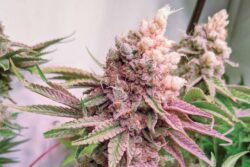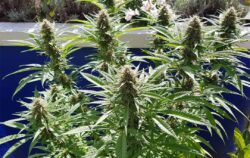How to grow cannabis outdoors in the UK
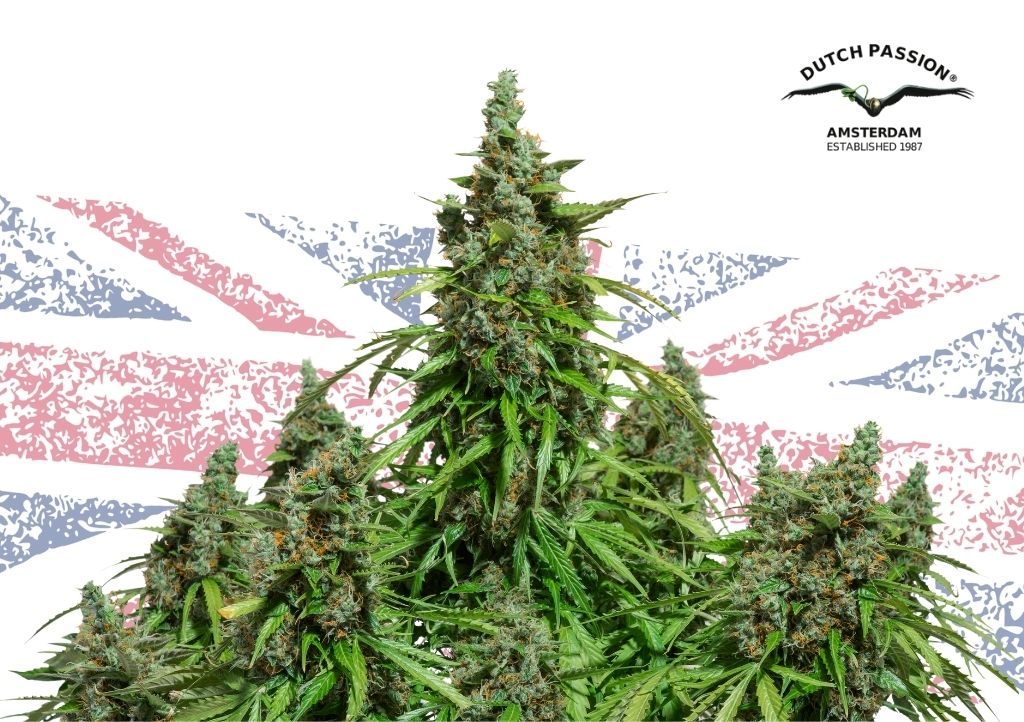
Can you grow cannabis outside in the uk? Yes you can. But growers in different parts of the UK face different challenges. A grower in the far north will face completely different challenges to a south coast grower. Some growers will be able to grow feminised outdoor seeds, whereas others will need to focus more on autoflower seeds. Dates of the last spring frost and the first winter frost vary from region to region, you will need to know yours. Local insect pests and threats from grazing animals also vary around the country. This practical guide explains how to grow cannabis in the UK and explains the month by month timeline for outdoor cannabis growers in the UK, boosting your chances of a successful harvest
What’s the legal status of growing cannabis in the UK?
Is it legal to grow cannabis in the UK? Cannabis is still regarded as a Category B drug in the UK, meaning it is illegal to grow, use or possess for recreational purposes. However in November 2018, UK Home Secretary Sajid Javid announced that cannabis would be legal for medical patients with an “exceptional clinical need”.
Since that point, however, only a handful of patients have been able to secure NHS prescriptions for medical cannabis. Private prescriptions can be made but these are too expensive for most people.
UK recreational and medical cannabis users are largely fatigued with the slow rate of change for UK laws compared to other countries in Europe and around the world. As a result, many UK cannabis users simply ignore the law and grow their own cannabis. A few well grown outdoor plants could provide a years worth of cannabis…
Which of these four types of climate do you live in?
The UK has a temperate oceanic climate, occupying mid-Atlantic latitudes from 49° to 61°N in western Europe. The close path of the jet stream ensures that the weather is changeable. The average annual rainfall is around 1.4 metres with around 130 rainy days each year. On the other hand, there are around 1500 hours of sun per year across the UK, thats around 4 hours per day on average. But which of the 4 main UK regions do you live in?
- South East: The South Eastern part of the UK can have cold, sharp winters, But summers can be sunny, dry and pleasant with plenty of warmth. Sometimes warm air masses from continental Europe can keep summers dry with occasional heat waves and 30ºC temperatures. Summers can also be grey and cool! South-east UK encompasses Norwich, Cambridge, Portsmouth and of course London. Growers in the South East find it possible to grow a wider range of feminised seeds than growers in Northern England.
- South-West: The South Western area of the UK often sees mild but wet winters. Summers are often warm but with plenty of Atlantic weather blowing in cloud and rain.The mild conditions allow a longer growing season than in possible in more northern regions. Includes South Wales, Cardiff, Exeter, Cornwall, Plymouth, Southern Wales etc. Just like South-East UK, growers in the South West will also find it possible to grow a wider range of later-finishing outdoor feminised strains than growers in northern England or Scotland.
- North-west: Cannabis growers in the north-west experience cool winters and summers which tend to be cooler and greyer than those further south. Prevailing Atlantic winds can bring rain and wind pretty much all year round. The North-Western region includes areas such as Northern Ireland, Northern Wales, and Western Scotland as well as areas like Greater Manchester, Merseyside etc. Growers in this region may find late season weather in September and October less friendly for growing slower blooming outdoor strains. Growers need to be selective about the feminised outdoor strains but will get good results with autoflower seeds.
- North East: Just like the North West, growers need to be mindful of climate limitations and the shorter grower season compared to growers in the warmer south. Winters can be cold, spring can be slow to arrive and the summer isn’t always as long as locals would like. Some outdoor feminised strains can be grown such as the tough Frisian Dew. But many outdoor growers also rely on autoflowers which can deliver guaranteed harvests even in shorter Scottish summers. The North East includes areas such as Yorkshire, Tyneside, Northumberland and Scotland.
Related:
Top 10 tips for growing cannabis outdoors in cold climates
What does your cannabis grow calendar look like?
It’s difficult to give precise guidelines for every city and grow location in the UK. But by generalising around the four main regions you may be able to get a rough idea of your local challenges. It may help you to conduct some internet research on weather specifics for your grow location, such as typical last frost dates in Spring etc.
What’s the best soil to grow cannabis in UK? If your local soil type is too poor (e.g. too sandy) then simply supplement it with supermarket soil and some grow additives – fish/blood/bone meal, rotted manure, worm castings, seaweed etc.
January/February
Many UK outdoor growers ignore January and February. But the good long reaching views and lack of leaves on trees, undergrowth and bushes can make this a great time to go scouting for possible future grow locations.
A winter walk along the river banks, through the fields and in the countryside can reveal promising future guerrilla grow locations which could be adapted to grow cannabis, UK winters have their uses!
One other useful activity at this time of year is the chance to dig the ground thoroughly. This allows you to remove any big roots, stones etc from the ground and it aerates the soil. You can also take the opportunity to dig in some well rotted manure, supermarket soil or soil improvers/fertilisers into the soil.
March
• Day length March 1st: 11 hours
• Average temperature: 3–10°C
March is often a time of excitement and anticipation for UK guerrilla growers. When growing cannabis, UK growers often want to germinate their seeds as early as possible.
It’s not unknown for the UK to have some great sunny and warm spring weather in March. This can lull UK growers into a false sense of optimism and cannabis seeds may be germinated a few weeks too early to be planted outdoors. Usually the time is better spent preparing your outdoor grow locations. Remember, several guerrilla grow plots are often preferred just in case you have bad luck at one of them. ‘Rippers’ (grow thieves) are a common threat, as are the nuisance of dog walkers and ramblers stumbling upon your grow.
Preparing the soil in your plot is one of the typical March activities. You may want to remove weeds and add some soil, compost or well rotted manure. If you add fresh manure, do it at the end of the previous growing season so it has time to be broken down by the soil over winter (otherwise it could burn the roots of your seedlings)
Greenhouse cannabis growers often use March to conduct a thorough greenhouse clean. Perhaps with a power washer to ensure the greenhouse is spotless. Clean the glass and remove debris to make it as clean as you can.
If you are lucky enough to be growing in areas like the Channel Islands you may want to germinate your cannabis seeds and consider an early start. But for most of the rest of the UK, it’s still a little too early to be germinating your cannabis seeds. However, if you have an indoor area to germinate your cannabis seeds and grow them under artificial lights, then this could be the time to get going. By germinating your feminised seeds (or autoflower seeds) early you give the seeds a head start and should have larger plants with heavier final yields.
But remember that you may not be planting your seedlings outdoors until May (or perhaps April in a greenhouse) so don’t rush and germinate your seeds too early at the first sign of a sunny day.
Related:
Growing cannabis in a greenhouse
April
• Day length April 1st: 13 hours
• Average temperature: 5–13°C
April often heralds the start of Spring for many in the UK. Mini heatwaves in April are not unknown, though over-ambitious outdoor growers should note that snow fall and frosts are still commonplace for several weeks to come. Spring flowers are making the most of the longer daylight hours and warmer daily maximum temperatures.
Some growers, especially those in warmer southern regions, may be tempted to reach for their cannabis seed stash and germinate some seeds. Realistically however, most growers won’t want to risk putting their seedlings outdoors in April weather with the possibility of wintery showers always present. Instead, growers often keep their seedlings indoors (or in heated greenhouses/poly-tunnels) for a few weeks until the threat of bad weather has fully passed.
When growing cannabis, UK outdoor growers may also want companion plants nearby. These tend to attract helpful insects and deter pests. Peppermint, yarrow, coriander, and marigold may help in this respect.
May
• Day length May 1st: 15 hours
• Average temperature: 8–16°C
Warmer southern regions as well as coastal areas often see their last frost in early May. Further north, you may have to wait a few weeks longer before considering putting your plants outdoors. May is the month when many UK growers like to get their cannabis plants outside.
Your plants may have been indoors under artificial lights for several weeks. Allow them to gradually acclimatise to outdoor temperatures for a few hours each day. When you do plant them outside, you can place the plants directly in the earth or leave them in containers. When rooted directly in the soil the roots will have unlimited growth space and this can allow large plants 2-3m tall. Or you can leave the plants in containers, but this will mean you have to ensure sufficient water. Plants in containers can be moved in emergencies, even if they don’t produce quite the same large monster plants that can grow when rooted directly in the earth.
Hot weather is also possible in May, so greenhouse growers may want to ensure sufficient ventilation. Final plant health is heavily dependent on the soil and nutrition which you provide. If you can ensure a healthy living soil, perhaps with added mycorrhizal fungi and beneficial bacteria the plants will benefit.
Some growers, with an eye to the future, will consider a light top soil dressing of worm castings, compost, compost tea or seaweed just to ensure that future nutritional needs are met. Others will add some slow release organic nutrients such as BioTabs to the soil to ensure healthy future growth. You may also wish to get some less hardy companion plants such as Chamomile going to help deter pests later in the year.
Once your outdoor plants are in position, you should protect them. Some growers use chicken-wire (garden wire mesh fencing) around their plants to protect them from deer, rabbits etc. You can use tent pegs to pin down the fencing and stop rabbits getting underneath. The most determined UK cannabis growers will also plant a perimeter of thorny brambles around their plots to deter grazing animals, dog walkers, hikers etc.
For many growing cannabis, UK slugs and snails are a massive pest. Slug/snail pellets are often repeatedly applied around the plants in generous quantities to prevent your plants being decimated by them.
Related:
Growing cannabis outdoors
June
• Day length June 1st: 16.5 hours
• Average temperature: 11–19°C
The threat of frost has gone (apart from some Scottish areas) and summer has arrived. With long days, your plants should establish themselves and start to thrive.
Occasionally June can be very hot. You may need to check rainfall locally and for the next 2-3 months consider transporting water to your plants in the unlikely event of a persistent drought.
Be sure to remove any weeds and don’t be afraid to chop down surrounding vegetation which threatens to rob your plants of valuable sunlight. Re-applying a layer of mulch can deter weeds from getting established and it doesn’t harm to reapply slug/snail pellets.
Those growing cannabis in the UK may also consider LST (low stress training) for tying down particularly tall plants. June is a good time to start, before the plants get too large to easily manipulate.
July
• Day length July 1st: 16.5 hours
• Average temperature: 13–22°C
Growing cannabis in the UK is great fun in July. Warm sunny weather is in plentiful supply and you may want to keep an eye on rainfall. Usually UK rain is never far away, even in July, but in drought you may need to transport water to your plants if there has been a few dry weeks. The long sunny days are ideal for cannabis. Growth above and below ground is in full flow.
Greenhouse cannabis growers may see 30ºC temperatures. Ensuring sufficient water is vital. Check for signs of pest infestation and also check for nutrient deficiencies. If you are growing in good quality, moist, nutritious soil then you shouldn’t see any issues. But it never does any harm to continually monitor the health of your plants.
One useful tip for those growing cannabis in the UK countryside is to avoid making a clear and obvious track to your plant location. This may simply encourage curious walkers to wonder why a new trail has emerged. Instead, it can be wiser to visit your outdoor grow location only when necessary. If possible, you may also wish to have different approach routes to your grow location to minimise the chance of creating an obvious pathway.
Some outdoor growers like to try to control surrounding vegetation throughout the summer. In particular they like to stop nearby trees and bushes from taking sunlight from their cannabis plants. Outdoor pests such as aphids, whitefly etc can be a nuisance though they can be tackled with traditional methods as well as predatory insects (ladybirds etc).
If you had good weather and planted your autoflower seeds early enough, you may be able to harvest your first autos in July.
Related:
Whats wrong with my cannabis plant?
August
• Day length August 1st: 15.5 hours
• Average temperature: 13–21°C
As August progresses, daylight hours and temperatures start to drop. The cannabis plant senses the reducing daylight hours and you may notice your photoperiod feminised plants are in bloom.
Autoflower plants are often ready to harvest around August. Many autoflower growers feel that they get particularly potent harvests since their buds are able to ripen under full summer sunlight.
Many that grow cannabis outdoors in the UK have found autoflower seeds are a great way to complement their normal photoperiod crop. What’s more, the autoflower harvest is much more likely to succeed since the mid summer weather is significantly more reliable than the weather in late September or early October.
Many that grow cannabis in the UK like to add extra nutrition in August to allow for a healthy bloom process. Seaweed fertilisers are popular, so is fish/blood/bone meal, worm castings etc. But if your soil is good quality it may not be absolutely necessary to add extra nutrients.
Humidity can be an issue when buds are starting to develop, but there is little that you can easily do to control it. Just ensure that you are selecting good quality outdoor cannabis seeds with reasonable resistance to mold. It also helps to select grow sites that have plenty of direct sunlight, especially early in the day. This helps drive away excess moisture from the plants and minimise mold/bud rot issues.
September
• Day length September 1st: 13.5 hours
• Average temperature: 11–18°C
Especially in the north, wet and windy weather is already becoming more and more common place. Many that grow cannabis in the UK find September and October to be the most critical months.
A few weeks of good weather at this time of the year can be the difference between success and failure for crops of outdoor feminised photoperiod strains. Most autoflower strains have already been harvested, but photoperiod outdoor strains will still be building their terpene profile and fattening up the buds.
Some southern growers will be able to harvest their photoperiod plants in September. Northern growers may need to wait a few more nervous weeks and hope the October weather stays good enough.
October
• Day length October 1st: 11.5 hours
• Average temperature: 8–14°C
October usually marks the end of the growing season unless the country has got lucky with a rare ‘Indian summer’ (which means a particularly warm Autumn/Fall). October weather is often cold, wet and windy.
Hopefully you didn’t choose any late blooming Haze genetics! Most growers like to get the plants harvested during October before the weather really goes downhill.
Growers in Scotland and the far north will be mindful of the first winter frosts arriving. Mold and bud rot are a constant threat and there are no guarantees of successful harvests at this late stage in the season. Strain selection is particularly important for outdoor growers in countries with UK-like weather.
If outdoor photoperiod feminised seeds are simply too risky in your specific climate then consider focussing more on autoflower seeds. In the UK, most autoflower seeds grow from seed to harvest outdoors in around 100-110 days. This is slower than indoor auto growing due to the weather, temperatures and reduced light hours. Autoflower seeds also tend to remain around a metre tall, making them easier to hide than some of the 3m tall photoperiod strains.
November
• Day length November 1st: 9 hours
• Average temperature 4-10ºC
If you get lucky with a warm dry autumn in Southern UK you may still be able to harvest some late blooming plants. Of course there are no weather guarantees so late in the UK outdoor season.
But if the weather hasn’t deteriorated too much, and perhaps with the aid of some shelter (e.g. a glass roof) it may be possible for some lucky southern UK growers to harvest something.
Failing that, November could be a month to tidy up your outdoor grow locations for the following year. You may want to dig in some manure ready for the following grow season
December
• Day length December 1st: 8 hours
• Average temperature: 2-7ºC
December is a good month to go scouting for possible new grow plots. The lack of vegetation and leaves make it easier to survey the landscape for possible secure grow locations. It’s also a great month to kick back, relax and enjoy the harvest which should be nicely dried and cured!
Growing photoperiod vs autoflower cannabis in the UK
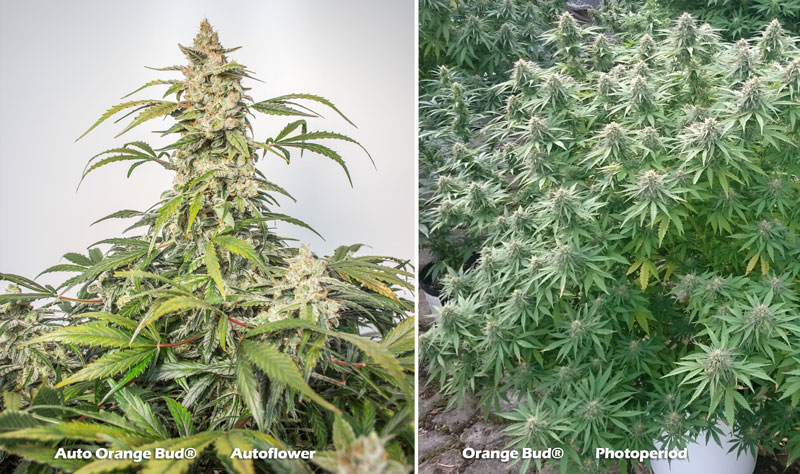
Cannabis seeds that grow in uk climate need to finish inside the short growing season. One of the main challenges for those growing cannabis in the UK is selecting strains that will finish in time. If you want to grow cannabis outdoors, UK growers can choose between autoflower seeds and photoperiod feminised cannabis seeds.
How to grow autoflowering cannabis in UK? Autoflower seeds have a faster growth cycle and they remain shorter (around 1m tall) than photoperiod feminised strains. But autoflower seeds also tend to yield a little less, which is natural since they have a shorter growing cycle.
Photoperiod feminised seeds tend to take 5-6 months to complete their outdoor grow cycle. This means that you may not be harvesting until the changeable October weather arrives. But you will often have larger plants and heavier harvests.
The shorter your grow season, the more that autoflower seeds will appeal. Many outdoor cannabis growers in the UK have several grow locations and use a mix of autoflower seeds and feminised seeds. Some northern growers prefer to avoid the risk and worry of photoperiod feminised seeds and grow autoflower seeds instead. Often they will have staggered start dates for their auto plants so they are harvesting gradually throughout the summer.
Many UK outdoor cannabis growers will germinate their cannabis seeds indoors and give them the first few weeks under artificial indoor light, e.g. 18-20 hours per day. They do this regardless of whether the seeds are autoflower seeds or feminised seeds. By giving the seedlings indoor light for the first few weeks the plants get the best possible start and avoid the threats of outdoor weather/pests while they are at their most vulnerable.
Related:
Autoflower vs feminised seeds outdoor growing
How many cannabis plants can i grow in UK?
How many cannabis plants can i grow in UK? Unless you have a licence to grow cannabis in the UK, then you can’t legally grow any. Grow your own cannabis in the UK and you are in breach of the law.
However, if you are growing a few plants outdoors the Police are unlikely to ever be able to link plants to any specific grower. They don’t have the resources for 24 hour surveillance for a small plot of autoflower plants.
Most outdoor growers don’t worry about the legal aspects of growing.
What are the best cannabis seeds for the UK climate?
How to grow cannabis outdoors in the UK? You will need good local knowledge of your climate, first frost dates etc. It also helps if you have some prior knowledge of which strains will grow well at your latitude/location. In climates like the South East and South West you should be able to grow photoperiod strains like Frisian Dew and perhaps other strains too.
Some, but not all, of the Dutch Passion outdoor seed collection can be grow in the UK. But much depends on the specific climate in your region. A lot also depends on the specific year you choose to grow in. Some years (admittedly not many of them) have long warm autumns which will allow growers in Northern regions to grow a selection of outdoor feminised strains such as Frisian Dew, Hollands Hope, Durban Poison, Shaman, Passion #1.

But the UK weather is so changeable that you may be able to finish blooming a particular strain one year but not the next. UK cannabis growers simply can’t rely on the weather in the way that growers in warmer countries can. That’s also the same reason why cannabis seed companies just can’t guarantee results from their strains.
That’s why growing autoflower seeds has become so popular with UK growers. The seeds should always finish in time. Yields from autos may be smaller (than photoperiod strains) but the plants are fast and easy to grow. They also tend to remain short and bushy – ideal for hiding behind bushes, nettles and plant life.
The following strain suggestions may be useful for UK growers:
Frisian Dew. A solid, proven photoperiod feminised outdoor strain which grows well in UK conditions. She is usually ready to harvest in early October. Grows well as far north as Northern England. Can finish bloom further north in mild autumns. One of the preferred and most recommended strains for growing cannabis in UK.
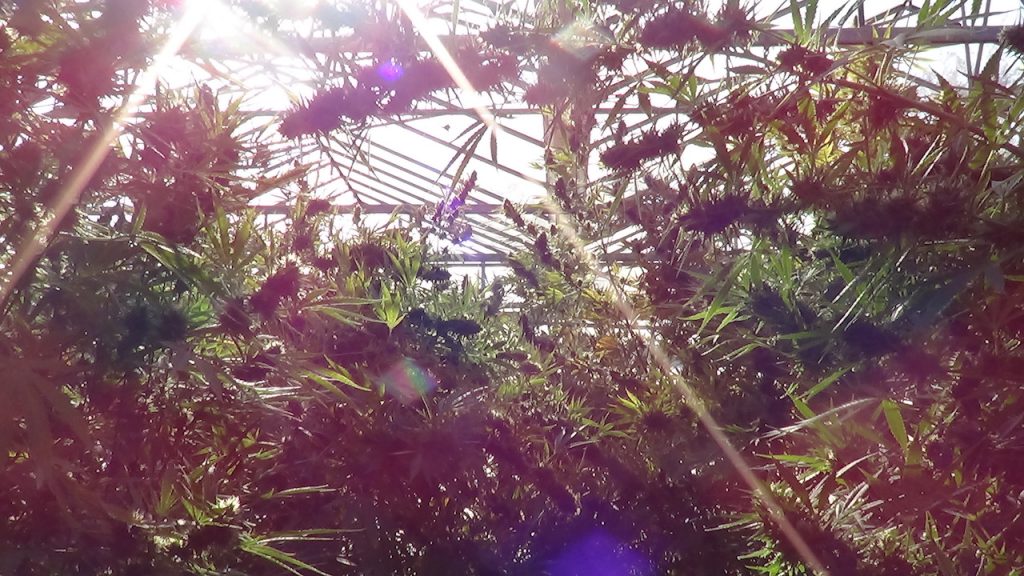
Durban Poison. Perhaps better suited to South East and South West regions in order to finish in time. This is another proven outdoor photoperiod feminised strain which grows well outdoors. Durban Poison seeds are part of the Dutch Outdoor seed collection. This is well worth browsing, all the strains in this collection grow well at Dutch (and similar) latitudes.
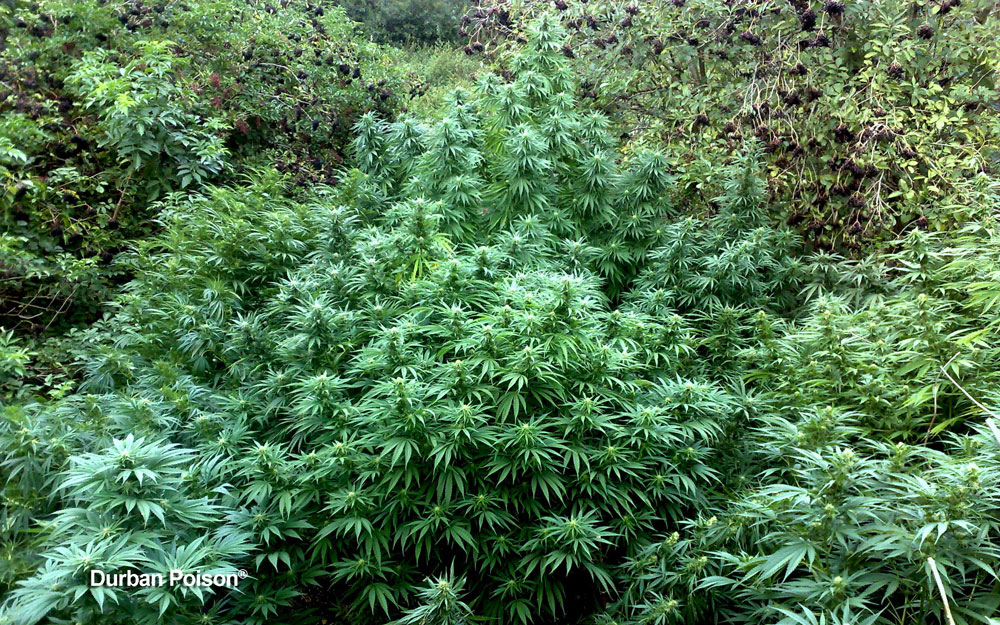
Frisian Duck. With the unique leaf shape Frisian Duck seeds are ideal for outdoor growers wanting a stealthy, self-camouflaging photoperiod feminised outdoor strain. Also available in autoflower seeds as Auto Duck.
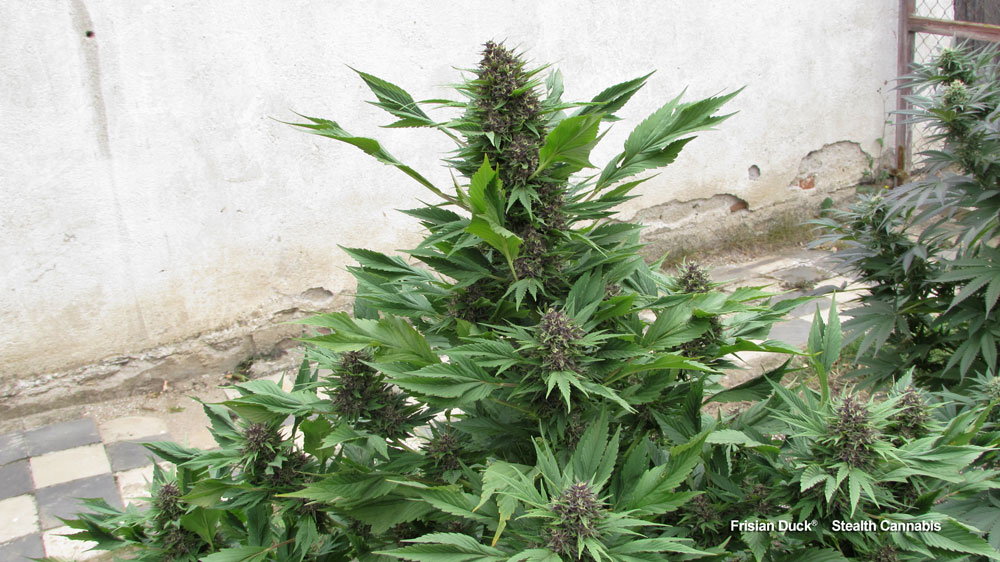
Auto Mazar. This tough and resilient auto grows well in UK conditions. Outdoors she takes around 100-110 days to finish and grows well throughout the UK. It’s worth adding that any of the Dutch Passion autoflower seeds collection should be able to grow and finish inside even a short northern UK summer.
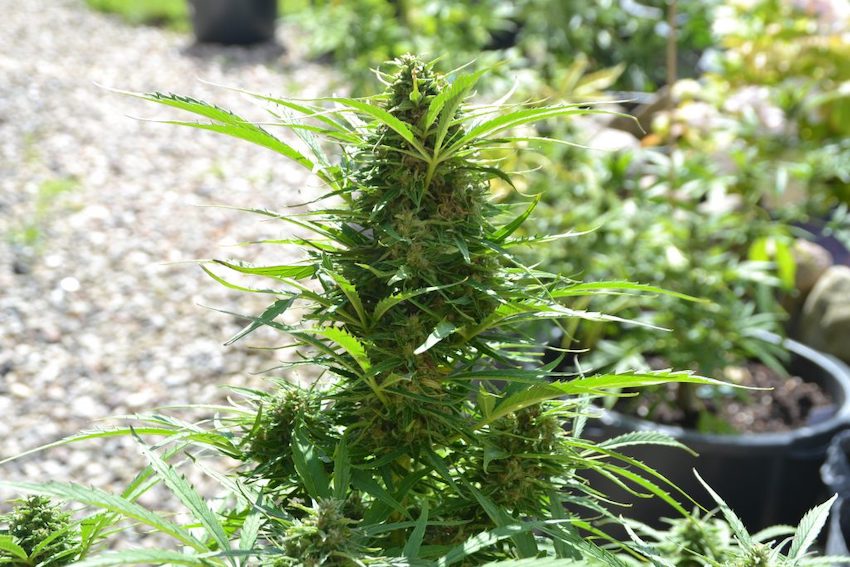
Auto Banana Blaze. This tough Afghani Kush autoflower seed produces heavy harvests with a unique sweet banana taste. Give her a good summer and she can really deliver heavy harvests. A solid and reliable autoflower for growing cannabis in the UK. Part of the Afghani Kush seed collection.
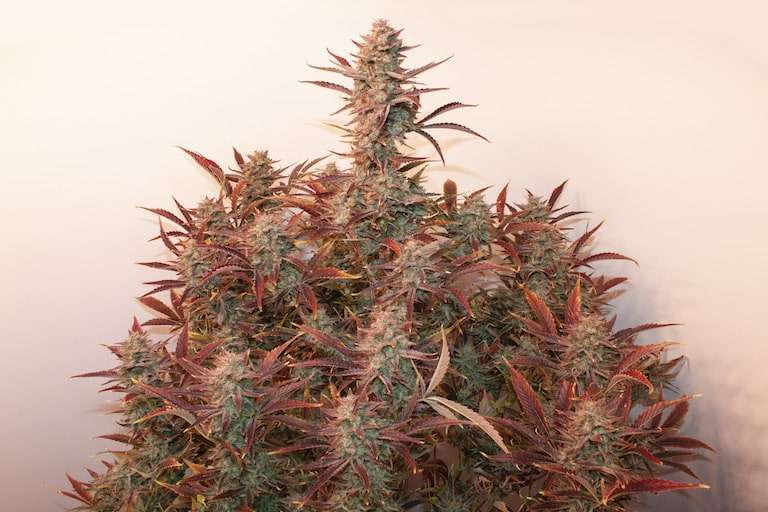
Growing cannabis in the UK really is easy
The diverse, changeable and unpredictable weather can mean that no two UK grow seasons are exactly the same. That can make it difficult to have a preferred strain which will always deliver, year in year out.
Understanding the limits of the grow season at various UK latitudes and locations is your starting point. From there, you should be able to grow autoflower seeds outdoors no matter where you are in the UK.
Many in more southerly locations will also be able to finish blooming photoperiod feminised outdoor strains too, though there are no guarantees particularly north of the Scottish border. Whatever you choose to grow, good luck and choose your cannabis seeds wisely!
Related:
Top 5 cannabis strains for colder climates
Top 5 best yielding outdoor feminised strains
Top 5 autoflower strains with the best yields












